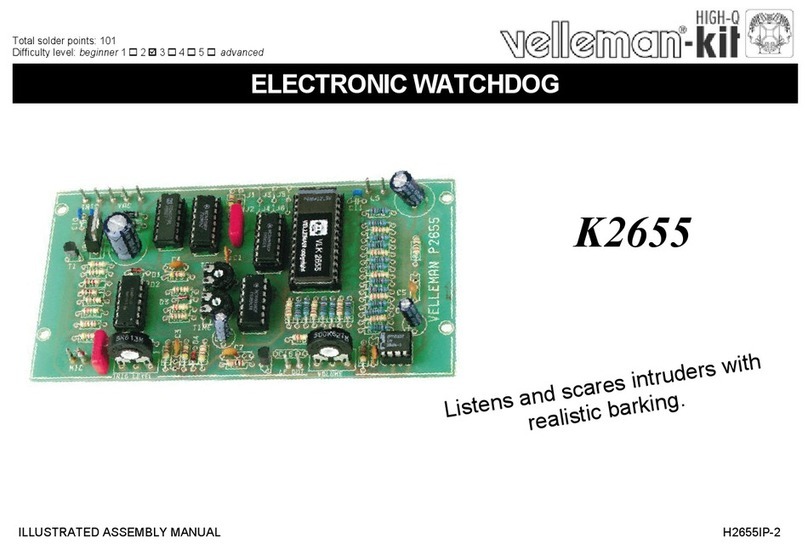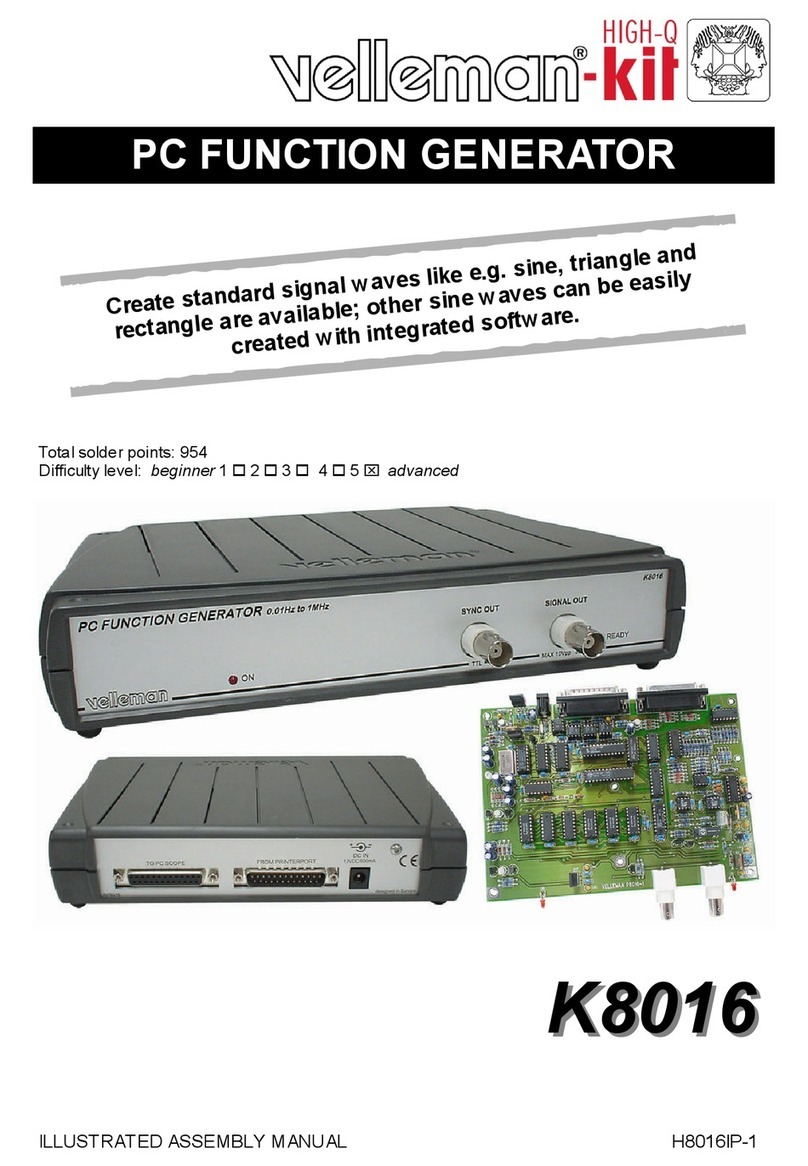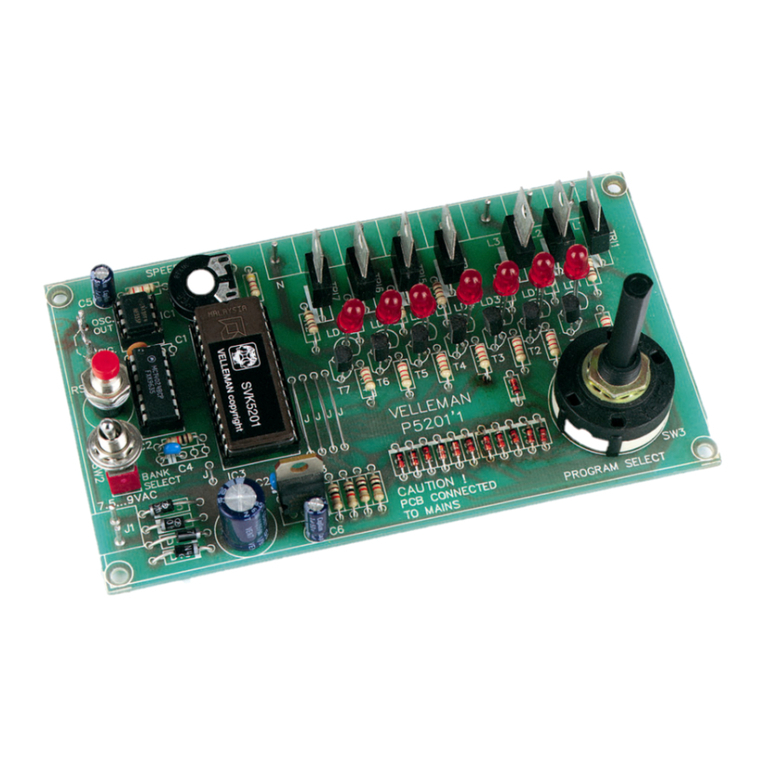Velleman-Kit K8055 User manual
Other Velleman-Kit Computer Hardware manuals

Velleman-Kit
Velleman-Kit K2655 User manual

Velleman-Kit
Velleman-Kit K8016 User manual

Velleman-Kit
Velleman-Kit K8000 User manual

Velleman-Kit
Velleman-Kit EDU 05 Installation and user guide

Velleman-Kit
Velleman-Kit K8090 User manual

Velleman-Kit
Velleman-Kit K6000 User manual

Velleman-Kit
Velleman-Kit K5201 User manual
Popular Computer Hardware manuals by other brands

Toshiba
Toshiba TOSVERT VF-MB1/S15 IPE002Z Function manual

Shenzhen
Shenzhen MEITRACK MVT380 user guide

TRENDnet
TRENDnet TEW-601PC - SUPER G MIMO WRLS PC CARD user guide

StarTech.com
StarTech.com CF2IDE18 instruction manual

Texas Instruments
Texas Instruments LMH0318 Programmer's guide

Gateway
Gateway 8510946 user guide

Sierra Wireless
Sierra Wireless Sierra Wireless AirCard 890 quick start guide

Leadtek
Leadtek Killer Xeno Pro Quick installation guide

Star Cooperation
Star Cooperation FlexTiny 3 Series Instructions for use

Hotone
Hotone Ampero user manual

Connect Tech
Connect Tech Xtreme/104-Express user manual

Yealink
Yealink WF50 user guide















